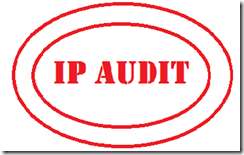The post was first published on November 5th, 2011.The value of IP for businesses is today an accepted fact. As I had mentioned in my earlier posts, companies are today grappling with establishing systems and mechanisms to derive value from IP rather than questioning its value as earlier. One important step in the process is uncovering IP in the company and categorizing its value for the business. I have elaborated on the role of IP Audit for identifying IP in my last post and my focus of this post is on using audit for establishing processes to derive business value.
A well-defined policy and process play a very important role in enabling a company to identify, protect, manage and commercialize IP for gaining business benefits. They lay down the IP road map of a company and enable the company to reach its business goals by using IP as a tool. Such systems ensure maximization of business benefit from IP in a company. Despite the value of IP systems, most companies in India lack well-defined processes that are in tune with their business goals. IP activities are mostly discrete and lack common business objectives thus resulting in wasteful investments. Many companies today are clueless about what they should do about the IP they have protected.
IP Audit can be a valuable tool in enabling companies establish processes that help further business objectives. After uncovering and classifying IP, the protected IP must be cleaned up and only IP that has either business value or revenue opportunities will be left. The next step after cleaning up existing IP is to establish processes that will generate IP that suits the business of the company and that enables the company to manage it effectively to maximize commercial benefits.
An Audit to establish IP systems involves the following steps:
a. Review of business and technology processes of the company;
b. Thorough study of the organization structure and role of each player in the structure;
c. Creation of IP stakeholders that fit into the business processes and organization structure for effective implementation;
d. Creation of a broad policy statement that outlines the IP goals based on business interests of the company and the company’s approach to IP utilization, enforcement, etc;
e. Establishment of processes that implement the policy with specific templates and well-defined role holders; and
f. Implementation of the policy and process and review after six months to make changes based on feedback.
Drafting a policy/process is the easy part, the tough part is drafting a policy that
Is easily accepted by various key personnel;
Does not disturb the existing business or technology or R and D processes;
Effectively identifies IP and uses it for optimal business benefit;
Amicably integrates all departments;
Optimizes IP investments and maximizes returns; and
Takes the business to the next level.
Achieving the said objectives requires a company to choose the right team, else the whole exercise may be a failure. As pointed out in my earlier post, the selection of personnel for the job is the key to a successful exercise. In addition to qualifications, the mindset of the experts, the capability to understand business objectives, experience in performing audits for similar companies and so on are key factors to be considered by a company for choosing an audit team.
In addition to the team, the mindset of key personnel in the company is also very important to create an acceptable and implementable process. Communication about the mandate from the top, establishment of belief in the value of the exercise through discussions, taking key personnel into confidence and making them stakeholders are some steps among others that have been successful. In other words, an IP system must integrate everyone into the process and cannot function successfully independently.
Authored by Dr. Kalyan Kankanala C.
To know more about the Intellectual Property services offered by BananaIP (Earlier known as Brain League) visit bananaip.com



